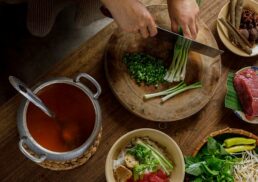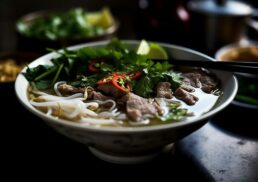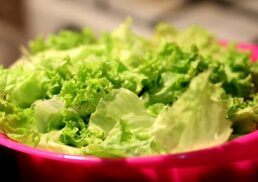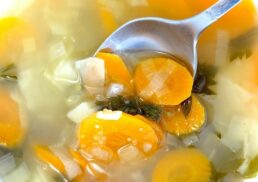Pho is a Vietnamese noodle soup with rich broth, rice noodles, and meats. Learn how to make authentic pho at home, from broth to bowl, and explore variations like chicken and vegetarian pho.
Table of Contents
Key Takeaways
Pho’s rich flavor comes from a carefully crafted broth using beef bones, fish sauce, and aromatic spices like star anise and cinnamon.
Assembling your pho is simple: cook rice noodles, add thinly sliced raw beef, then pour hot broth over everything for perfect cooking.
Pho is versatile with options like chicken, pork, or vegetarian variations, allowing for different flavors while keeping the essence of the dish.
Essential Ingredients for Pho
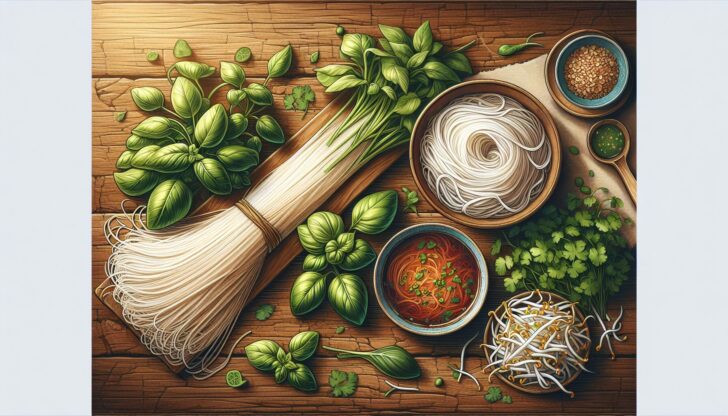
A rich, flavorful broth is the foundation of any great pho recipe. Beef knuckles or leg bones create a deep, beefy flavor, while fish sauce adds umami depth.
Fresh herbs like cilantro, mint, and Thai basil add vibrant flavors and aromas. Whole star anise and cinnamon stick enhance the broth’s complexity. Iconic rice noodles, slightly chewy, are perfect for soaking up the hot broth.
Fresh bean sprouts, lime wedges, and thinly sliced onions provide crunch and brightness. Whether you’re making beef pho or exploring other variations, these ingredients are key to an authentic pho experience.
Step-by-Step Guide to Making Pho Broth
Crafting a perfect pho broth involves manageable steps. The broth defines pho’s essence and sets the stage for the other ingredients. Simmer traditional pho broth for several hours to develop rich, complex flavors.
This guide covers the essential steps: preparing beef bones, toasting spices, and simmering the broth. Each step ensures your pho broth is light, flavorful, and full of deep, savory notes.
Preparing the Beef Bones
Begin with preparing the beef bones by roasting them to enhance their flavor. Clean the bones thoroughly before boiling, rinsing off any residual meat or blood. This ensures a clear broth.
Parboil the beef bones for about five minutes to remove impurities, ensuring a clearer, more flavorful base. Wash the bones thoroughly after parboiling to remove any remaining scum or particles.
The bones are now ready to impart their rich essence to the broth.
Toasting Spices and Aromatics
Toasting spices is essential for building the foundational flavors of your pho broth. Toast whole spices like star anise, cinnamon stick, and coriander seeds in a skillet over medium-low heat to release their aromatic oils.
Char ginger and onions over an open flame until blackened to infuse the broth with a deep, smoky flavor. Toasted spices and charred aromatics create a rich flavor profile, hallmark of authentic pho broth.
Simmering the Broth
With beef bones and aromatics ready, start simmering the broth. Place the prepared bones, charred ginger, and onions into a large pot, adding water to cover, and bring to a boil. Lower the heat to maintain a gentle simmer for at least three hours to meld the flavors.
While simmering, add fish sauce and rock sugar to enhance the flavor. Skim off any fat from the surface to keep the broth clear. After three hours, add more spices like cinnamon stick and star anise, and continue simmering for another four hours for deeper flavors.
Once simmering is complete, strain the broth to remove solids, and adjust the seasoning with fish sauce, salt, and sugar as needed. Your fragrant and flavorful pho broth is now ready to become the base of your Vietnamese noodle soup.
Assembling Your Pho Bowl
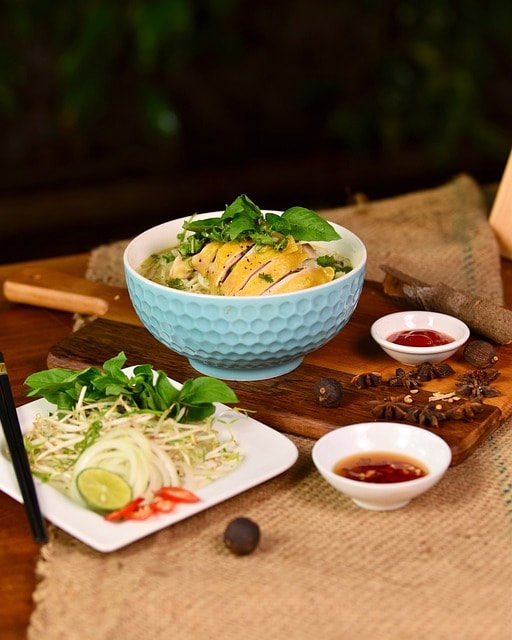
With the pho broth ready, it’s time to assemble your bowl. The process is simple but requires attention to detail for each component to be perfect. Prepare rice noodles according to the package instructions until they are tender yet slightly chewy.
Arrange the thinly sliced raw beef, fresh herbs, and garnishes. Pour the hot broth over the beef to cook it instantly. Top with bean sprouts, Thai basil, and lime wedges, and your bowl of pho is ready to enjoy.
Preparing Rice Noodles
Rice noodles, known as bánh phở, are a crucial component of flat rice noodles. Cook the noodles according to the packet instructions, usually in a separate saucepan. This maintains their texture and prevents the broth from becoming starchy.
Once cooked, the noodles should be slightly chewy. Drain and rinse them under cold water to stop the cooking process, then set aside until ready to assemble your bowl.
Adding Thinly Sliced Raw Beef
Thinly sliced raw beef is key to perfect beef pho. Select beef chuck or raw sirloin, and partially freeze it for about an hour to ease slicing. Slice the beef as thinly as possible against the grain.
Just before serving, place the raw beef slices in the bowl and pour the hot broth over them. The heat from the broth will cook the beef to tender perfection. If you prefer fully cooked beef, dip the slices in the hot broth before adding them to your bowl.
Garnishing with Fresh Herbs and Toppings
Fresh herbs and toppings add layers of flavor and texture to your pho. Common garnishes include fresh bean sprouts, Thai basil, and lime wedges. These enhance the visual appeal and contribute to the overall taste experience.
Squeeze fresh lime juice over the top for a burst of acidity. Add bean sprouts for crunch, and top with fresh herbs like cilantro and mint. These garnishes are essential for an authentic experience.
Variations of Pho
Pho’s versatility allows experimentation with different meats and vegetarian options. Classic beef pho is just one way to enjoy this Vietnamese noodle soup. Chicken pho, vegetarian pho, or pork pho can suit different tastes and dietary preferences. Pho soup can also be a delightful choice for those exploring various flavors.
Each variation brings unique flavors and textures, customizable with various garnishes and toppings. Whether you prefer the rich beefy notes of traditional pho or the lighter, herbal flavors of chicken pho, there’s a version for everyone.
Chicken Pho (Phở Gà)
Chicken pho, or phở gà, features a lighter broth made from chicken bones. Simmer the bones with spices like star anise and ginger for several hours to extract maximum flavor. Regularly skim the surface to keep the broth clear.
Add thinly sliced chicken breast to the hot broth just before serving so it cooks properly. Garnish with fresh herbs and enjoy a comforting bowl of chicken pho, just as delicious as its beef counterpart.
Vegetarian Pho
For a vegetarian twist, make a rich and flavorful pho broth using various vegetables, spices, and herbs. Omit the fish sauce to keep it vegetarian-friendly.
Use mushrooms, carrots, and daikon to build the broth’s depth. Add tofu or other plant-based proteins to your bowl, along with fresh garnishes like bean sprouts and Thai basil, for a satisfying vegetarian pho.
Pork Pho
Pork pho offers a delicious variation with a rich, savory broth made from pork bones. Parboil the pork bones to remove impurities, then simmer them with spices and aromatics like onion and ginger. This ensures a clear and flavorful broth.
Once the broth is ready, assemble your bowl with rice noodles, thinly sliced pork, and fresh garnishes like bean sprouts and Thai basil. The result is a satisfying bowl of pork pho rivaling any found in Vietnamese restaurants.
Serving and Enjoying Pho
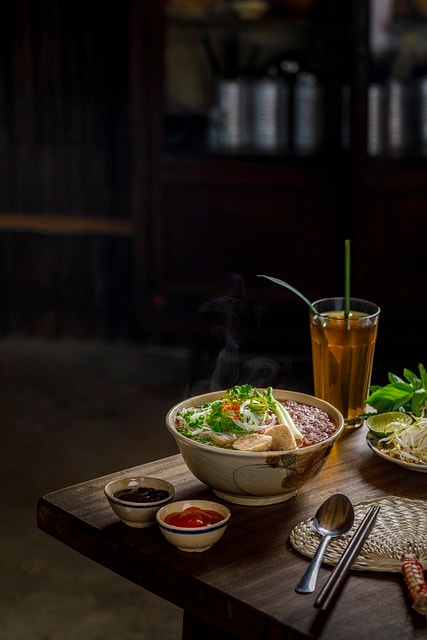
Serving and enjoying pho is a delightful experience. Use chopsticks for the noodles and a spoon for the broth. Slurping is encouraged as it helps cool the hot broth and enhances the flavors.
Garnish your pho with cilantro, basil, green onions, bean sprouts, lime wedges, and sliced chilies for freshness. These garnishes add texture and vibrant flavors, making each bite a new adventure.
Whether at home or in a restaurant, these tips help you savor every moment.
Storing and Reheating Pho
Pho broth can be stored for several months without losing its flavor, perfect for meal prep. Store leftover broth and noodles in an airtight container to maintain freshness. When ready to enjoy again, reheat the broth gently on the stove rather than in the microwave to preserve its quality and flavor.
Warm the broth separately before adding the noodles and meat when reheating. This helps maintain the texture of the noodles and ensures the meat is heated evenly.
Nutritional Information
Pho is not only delicious but also nutritious. A typical serving of pho contains approximately:
215 calories, making it a relatively low-calorie meal
15 grams of protein, which is essential for muscle repair and growth
25 grams of carbohydrates
5.5 grams of total fat
a variety of vitamins and minerals
While pho does contain sodium, the fresh herbs and vegetables add valuable nutrients. This balance makes pho a wholesome choice for a satisfying meal.
Learn more, visit Pho Recipe (Vietnamese Noodle Soup).
Summary
Making pho at home is a rewarding experience that brings the flavors of Vietnam to your kitchen. From crafting the perfect broth to assembling your bowl with fresh garnishes, each step is an opportunity to create a dish that is both comforting and full of flavor.
We hope this guide has inspired you to try making your own pho. Whether you stick to traditional beef pho or explore variations like chicken or vegetarian pho, you’re sure to enjoy this delicious Vietnamese noodle soup.
Frequently Asked Questions
Can I use other types of meat for pho?
Absolutely, you can switch it up with chicken, pork, or even tofu for a tasty twist on pho. Have fun experimenting!
How do I keep the broth clear?
To keep your broth clear, just skim off any fat and impurities that rise to the surface during the simmering process. It really makes a difference!
Can I make pho broth ahead of time?
Absolutely, you can make pho broth ahead of time and store it for several months while keeping its delicious flavor intact. Just make sure to store it properly!
What are common garnishes for pho?
Pho is often served with tasty garnishes like bean sprouts, Thai basil, lime wedges, and sliced chilies. These add fresh flavors that really enhance the dish!
How do I reheat leftover pho?
To reheat leftover pho, warm the broth gently on the stove and heat the noodles and meat separately to keep them from getting mushy. This way, you’ll enjoy that fresh pho taste again!
